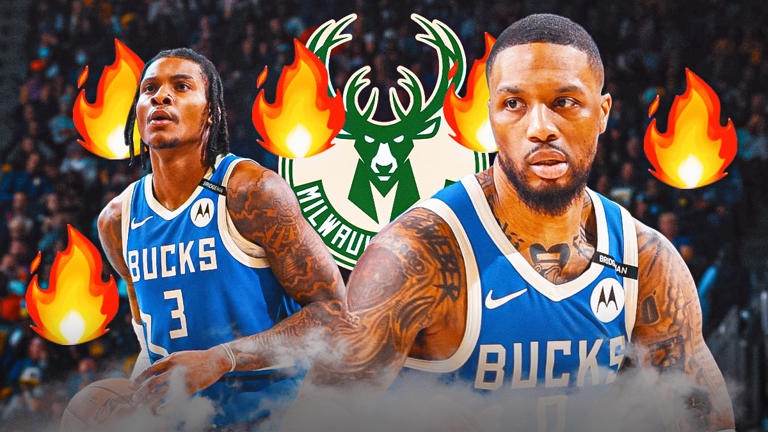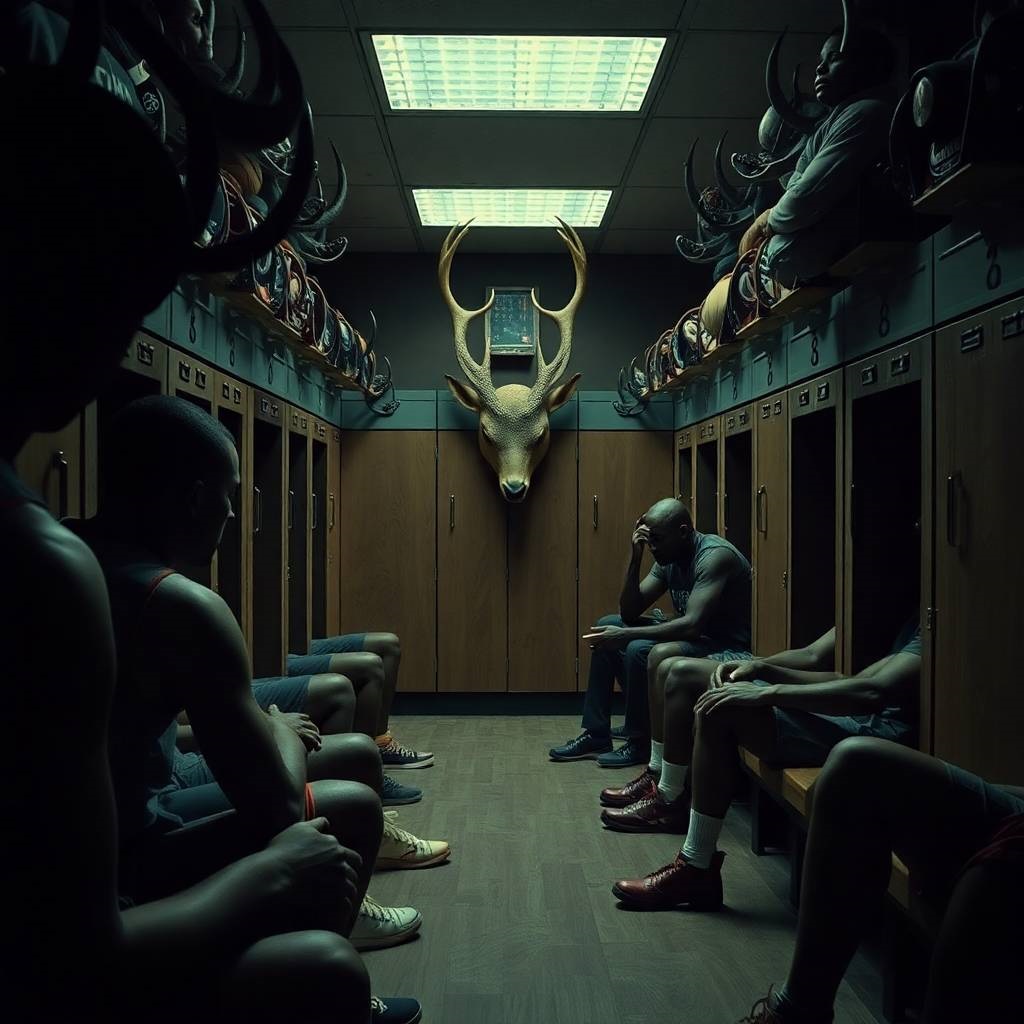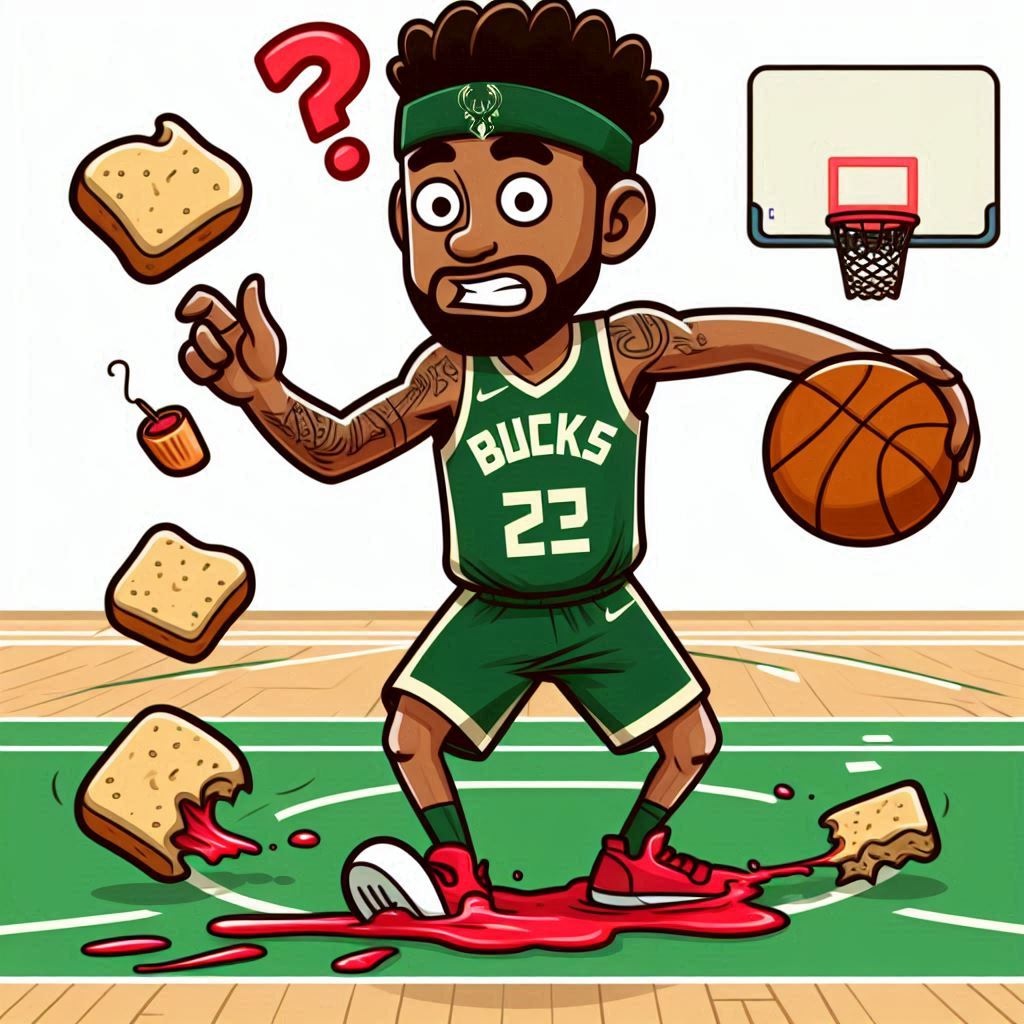As the Milwaukee Bucks navigate the 2024-25 NBA season, the dynamic in their backcourt has shifted dramatically. With Damian Lillard sidelined indefinitely due to a deep vein thrombosis in his right calf, Kevin Porter Jr. has stepped into a more prominent role. Acquired at the trade deadline, Porter has quickly become a key piece for the Bucks, raising questions about how he stacks up against the All-Star he’s temporarily replacing. Let’s break down the prospects, advantages, and disadvantages of each player for Milwaukee as the team pushes toward the playoffs.
Kevin Porter Jr.: The Rising Spark
Prospects:
Since joining the Bucks, Kevin Porter Jr. has injected energy and versatility into the roster. His recent performances—like nearly securing a triple-double with 24 points against the Heat in an overtime win on April 5, 2025—highlight his potential as a multi-faceted contributor. At 24 years old, Porter is still developing, offering the Bucks a younger, hungrier option with room to grow. His ability to score, facilitate, and defend makes him a valuable asset, especially off the bench or as a fill-in starter during Lillard’s absence.
Advantages:
- Athleticism and Energy: Porter brings a burst of athleticism that complements Giannis Antetokounmpo’s dominance. His highlight-reel dunks and quickness in transition add a dynamic edge to Milwaukee’s pace.
- Versatility: Porter can handle the ball, shoot from deep (as seen in his downtown bombs against the Kings and Hawks), and contribute defensively. This flexibility allows coach Doc Rivers to deploy him in various lineups.
- Cost and Youth: Compared to Lillard’s max contract, Porter is a cost-effective addition with a lower salary cap hit, giving the Bucks financial flexibility. His youth also aligns with a potential long-term vision if Lillard’s injury lingers.
- Playmaking Relief: Porter’s ability to create off the dribble reduces the pressure on Giannis when Lillard is out, bridging gaps during rest periods for the starters.
Disadvantages:
- Inconsistency: Porter’s “boom-or-bust” nature—evident in his occasional turnover issues and streaky shooting—makes him less reliable than a seasoned star like Lillard.
- Experience Gap: With only a handful of seasons under his belt, Porter lacks the playoff pedigree and clutch gene that Lillard has honed over a decade.
- Fit with Starters: His ball-dominant style can clash with the starting unit’s rhythm, which is why he often thrives with the second unit alongside players like Kyle Kuzma.
Damian Lillard: The Proven Superstar
Prospects:
Before his injury, Damian Lillard was the Bucks’ offensive linchpin, averaging 24.9 points, 7.1 assists, and 4.7 rebounds on efficient shooting splits (.448/.376/.921) across 58 games this season. At 34, he remains a top-tier point guard, though his indefinite absence due to a blood clot has cast doubt on his return timeline. The Bucks traded for Lillard to pair him with Giannis for a championship run, and his playoff experience and leadership are still critical to that goal—if he can return this season.
Advantages:
- Clutch Performance: Lillard’s nickname, “Dame Time,” isn’t just hype. His ability to take over games in crunch time is unmatched, a trait Porter hasn’t yet developed.
- Elite Shooting: Lillard’s 37.6% three-point shooting on high volume stretches defenses, creating space for Giannis and others. His off-ball movement, praised by Lillard himself as a “weapon” with Porter, enhances Milwaukee’s offense.
- Leadership and Experience: With nine All-Star nods and a history of carrying teams deep into the playoffs, Lillard brings a calming presence and strategic know-how that Porter can’t replicate.
- Synergy with Giannis: The Lillard-Antetokounmpo pick-and-roll was designed to be lethal, and when healthy, it’s a cornerstone of Milwaukee’s title hopes.
Disadvantages:
- Injury Uncertainty: Lillard’s current health status is a massive question mark. A blood clot is no minor issue, and even with optimism about a return, there’s no guarantee he’ll be at 100% this season.
- Age and Decline: At 34, Lillard’s prime may be waning. His defensive limitations, already a concern, could worsen as he ages, unlike the spry Porter.
- High Cost: Lillard’s hefty contract ties up significant cap space, limiting roster flexibility compared to Porter’s cheaper deal.
Bucks’ Outlook: Short-Term vs. Long-Term
In the short term, Kevin Porter Jr.’s emergence is a lifeline for a Bucks team reeling from Lillard’s absence. His recent heroics—like the Heat game—show he can keep Milwaukee competitive, especially with Giannis still anchoring the squad. Porter’s energy and defensive tenacity align with the Bucks’ shift toward a grittier identity, as noted by The Athletic. However, his inconsistency and lack of playoff seasoning mean he’s not yet a true replacement for Lillard’s star power.
If Lillard returns, the Bucks revert to their original blueprint: a superstar duo driving a championship push. His proven track record and synergy with Giannis make him the superior option for a deep playoff run. But if the injury sidelines him for the season—or beyond—Porter could evolve into a cornerstone, offering a glimpse of a post-Lillard future.
Playing alongside Giannis Antetokounmpo presents unique challenges and opportunities for teammates like Damian Lillard and Kevin Porter Jr. due to Giannis’s dominant playing style, physical attributes, and the way he impacts game dynamics. Below are some potential problems and considerations for Lillard and Porter when sharing the court with Giannis, based on their respective skill sets and the Bucks’ team context as of April 6, 2025.
For Damian Lillard
- High Usage Conflict:
Both Giannis and Lillard are high-usage players who thrive with the ball in their hands. Giannis often operates as a primary ball-handler, driving to the basket or facilitating from the top of the key, while Lillard is accustomed to creating his own shot, particularly from long range. This overlap can lead to a struggle for rhythm, as Lillard may see fewer opportunities to initiate the offense, especially in crunch time when Giannis tends to dominate the ball. - Off-Ball Adjustment:
Lillard has historically been less effective as an off-ball player compared to his on-ball creation. Giannis’s game relies heavily on attacking the paint, which often draws defensive attention and creates open perimeter shots. However, Lillard’s off-ball movement and catch-and-shoot efficiency have not always been elite, meaning he may not fully capitalize on the space Giannis creates. This can result in a less fluid two-man game than expected from such a high-profile duo. - Defensive Mismatch:
Giannis’s presence allows the Bucks to switch aggressively and play a physical, paint-protecting style. However, Lillard’s defensive limitations—particularly his size and struggles against quicker guards—can be exposed when paired with Giannis. Opposing teams may target Lillard in pick-and-roll situations, forcing Giannis to cover more ground as a help defender, which could disrupt the team’s defensive cohesion. - Spacing Constraints:
While Lillard’s elite three-point shooting should theoretically complement Giannis’s paint dominance, Giannis’s lack of a reliable outside shot can sometimes clog driving lanes for Lillard. If defenses sag off Giannis, they can pack the paint, daring Lillard to shoot over multiple bodies rather than giving him clean looks or open drives.
For Kevin Porter Jr.
- Role Definition:
Porter has thrived as a secondary creator and scorer off the bench for the Bucks, often running the second unit with a high usage rate. However, when playing alongside Giannis, his role becomes less clear. Giannis’s ball-dominant style can reduce Porter’s opportunities to handle the ball and create, potentially relegating him to a spot-up shooter—a role that doesn’t fully utilize his dribble-drive and playmaking abilities. - Overlap in Driving Style:
Both Giannis and Porter excel at attacking the rim and finishing through contact. While this can be a strength in transition, it can create congestion in half-court sets. With Giannis already commanding the paint, Porter may find his driving lanes limited, forcing him to rely more on his inconsistent outside shot (e.g., his three-point percentage has been subpar at times, such as 24.5% earlier in the season). - Defensive Responsibility:
Porter has shown defensive potential with his length and athleticism, which Giannis has praised for its versatility. However, playing with Giannis requires disciplined team defense, as Giannis often anchors the scheme. Porter’s tendency to gamble for steals or lose focus off-ball could lead to breakdowns, putting extra pressure on Giannis to clean up mistakes in the paint. - Minutes Competition:
With Giannis and Lillard as the focal points, Porter’s minutes can fluctuate, especially in playoff scenarios where rotations tighten. His effectiveness as a downhill attacker and creator is most pronounced when he has the freedom to operate, but Giannis’s presence often dictates a faster, more structured pace that may not align perfectly with Porter’s improvisational style.
Broader Team Dynamics
- Pace and Transition: Giannis thrives in transition, using his speed and length to overwhelm defenses. Lillard and Porter can benefit from this, but both are more comfortable in slower, controlled settings where they can set up their shots or break down defenders. This mismatch in tempo can lead to disjointed possessions.
- Pick-and-Roll Chemistry: Giannis is an exceptional pick-and-roll partner as a roller, but neither Lillard nor Porter has fully optimized this action with him. Lillard’s pick-and-roll game is often geared toward his own scoring, while Porter’s experience as a primary handler may not translate seamlessly into setting up Giannis.
- Crunch-Time Hierarchy: In close games, Giannis typically takes over, which can sideline Lillard and Porter. Lillard, a proven clutch performer, might feel underutilized, while Porter’s role could shrink entirely, limiting his impact in key moments.
Conclusion
For Damian Lillard, the primary issues stem from overlapping ball dominance, adapting to an off-ball role, and defensive vulnerabilities that Giannis can’t fully mask. For Kevin Porter Jr., the challenges lie in carving out a consistent role, avoiding redundancy with Giannis’s paint-oriented game, and maintaining defensive discipline within Giannis’s system. While Giannis’s gravity and play making create opportunities, they also demand adjustments that neither Lillard nor Porter has fully mastered as of April 6, 2025. The Bucks’ success hinges on finding a balance where Lillard’s shooting and Porter’s versatility amplify Giannis’s dominance rather than compete with it.
Final Thoughts
For now, Kevin Porter Jr. is a spark plug keeping the Bucks afloat, while Damian Lillard remains the engine of their title aspirations. Porter’s advantages lie in his youth, versatility, and immediate impact, but his ceiling is untested. Lillard’s experience and elite skill set are irreplaceable, though his health looms as the ultimate wildcard. As of April 6, 2025, the Bucks need Porter to shine in the present, but their ultimate success still hinges on Lillard’s return. The contrast between the two guards is stark—one’s a rising talent, the other a fading star—but together, they could define Milwaukee’s season, if fate allows.
Damian Lillard on the pairing of him and Kevin Porter Jr in the back court:
— Jackson Gross (@JGrossBucks) March 16, 2025
“My biggest joy is being able to play off the ball and not be on the ball so much,” Lillard said. “That’s gonna be a weapon for us in the playoffs.” pic.twitter.com/VmURBN7uXF
(Related previous analysis of how Dame fits with Giannis and how Khris did)



